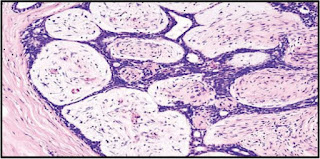Distribution of Head Smudge (Helminthosporium Miyakei) of Tef Disease During Short Rainy and Main Cropping Seasons in Some Parts of Oromia and Southern Nation Nationality and People Regions of Ethiopia: OAJBS Publishers
Distribution of Head Smudge (Helminthosporium Miyakei) of Tef Disease During Short Rainy and Main Cropping Seasons in Some Parts of Oromia and Southern Nation Nationality and People Regions of Ethiopia by Ashenafi Gemechu Degete* in Open Access Journal of Biomedical Science (OAJBS)
Head smudge of tef caused by Helminthosporium miyakei is among the most economically important disease causing significant economic losses of yield and quality. To investigate the distribution of this disease in belg (short rainy) and main (long rainy) seasons in Oromia and SNNP regions, disease assessment survey was conducted in 2019 main season and 2020 belg season from September 25 to May 22-25 G. C. Tef fields were randomly selected at 5-10 km intervals along accessible routes. The result showed head smudge prevalence and intensity varied across locations within the zone and among districts. From a total of forty-two fields surveyed during main and belg seasons (twenty-three fields during the main season and nineteen fields during belg season) were assessed. Quncho was the most prevalent 34.78% and followed by Magna having the prevalence of 26.1% during the main season. Of the assessed areas, the highest incidence was observed in Sokoru districts of Jimma and Wondogenet of West Arsi Zone accounting for about 100% and with the mean severity value of 97%. The highest mean value of incidence was recorded on varieties Tesfa and Quncho with the mean value of 100 and 83.33% followed by local tef variety (80%) during the main cropping season, respectively. During Belg season survey, Boset was the most prevalent accounting for about 68.4% of the assessed areas and followed by Magna variety with the prevalence of 15.79% of the area assessed areas. Efforts should be made towards the integration of multiple disease control options. Varietal diversification is also another issue to minimize the effect of this disease. This study indicates that there was no use of fungicide to control this disease. Currently, the disease was becoming severe, and using fungicide may be an option to control this disease. The other issue is the screening of germplasm to this disease and selecting that tolerant or resistant line (s) and incorporating in the breeding program will also another option to control this disease in the future. https://biomedscis.com/fulltext/distribution-of-head-smudge-helminthosporium-miyakei-of-tef-disease-during-short-rainy-and-main-cropping-seasons.ID.000289.php
To Know More About Open Access Journal of Biomedical Science Please Visit: Biomedscis
Are Click on: https://Biomedscis.Com/


Comments
Post a Comment